Key Takeaways
1. Forge the G3: CEO, CFO, and CHRO as the Core Leadership Team
"The G3 is the most important and most powerful tool at the disposal of any modern CEO."
Leadership triumvirate. The G3, consisting of the CEO, CFO, and CHRO, forms the core leadership team in a talent-driven organization. This group aligns financial and human capital decisions, ensuring that talent considerations are central to all strategic decisions.
Elevating HR. By including the CHRO in this core group, companies acknowledge the critical role of talent in driving value. The CHRO must be a business-savvy leader capable of linking talent strategies to business outcomes.
Collaborative decision-making. The G3 meets regularly to discuss and decide on crucial business matters, integrating financial, operational, and talent perspectives. This approach ensures a holistic view of the company's challenges and opportunities.
2. Identify and Nurture the Critical 2 Percent of Value Creators
"The potential of your company depends on this group."
Disproportionate value creation. The critical 2 percent are employees who create outsized value for the company. They may not be the highest-ranking executives but are key influencers, innovators, and problem-solvers throughout the organization.
Continuous assessment. Identifying and nurturing this group is an ongoing process. It requires:
- Regular talent reviews
- Performance analysis
- Skill assessment
- Career development planning
Strategic deployment. Once identified, these high-value employees should be placed in roles where they can maximize their impact. This may involve cross-functional assignments, special projects, or leadership positions that leverage their unique abilities.
3. Leverage Digital HR Tools for Data-Driven Talent Decisions
"We are entering an era in which data-driven software analysis will become a standard part of any talent decision."
HR technology revolution. Modern HR software provides powerful analytics capabilities that enable more informed talent decisions. These tools can help with:
- Recruiting and hiring
- Performance management
- Retention prediction
- Career path planning
- Skills gap analysis
Data-driven insights. By leveraging these tools, companies can make more objective and effective decisions about talent acquisition, development, and deployment. This data-centric approach reduces bias and improves overall talent management outcomes.
Continuous improvement. As AI and machine learning capabilities advance, these tools will become even more sophisticated, offering predictive analytics and personalized recommendations for talent management strategies.
4. Align the Board with the Talent-First Transformation
"You want the board to become a powerful tool to help you realize and sustain a talent-first organization."
Board engagement. Educate and involve the board of directors in the talent-first transformation. This includes:
- Regular talent discussions in board meetings
- Board member involvement in talent reviews
- Renaming the compensation committee to the "talent and rewards committee"
New metrics. Introduce a new definition of TSR: Talent, Strategy, Risk. This shifts the board's focus from purely financial metrics to a more holistic view of the company's health and potential.
Diversity focus. Make diversity a key topic in board discussions, ensuring that the company is attracting and retaining a diverse talent pool that reflects its customer base and society at large.
5. Design an Agile, Platform-Based Organization for Talent Optimization
"Agility is often seen, incorrectly, as the opposite of stability. In fact, as you'll see in this chapter, true agility will make your company more—not less—stable than a traditionally hierarchical organization."
Flexible structure. Design an organization that allows for rapid reallocation of talent based on changing business needs. This may involve:
- Cross-functional teams
- Project-based work
- Internal talent marketplaces
Platform thinking. Move away from rigid hierarchies towards a platform model that enables talent to flow to where it's most needed. This approach facilitates:
- Rapid innovation
- Knowledge sharing
- Skill development
Meaningful work. Ensure that the organizational design supports employees' desire for purpose and meaning in their work. This involves clear communication of company mission and how individual roles contribute to larger goals.
6. Reinvent HR as a Strategic Value Creator
"The time has come to remake and releverage HR into much more of a creator of value and competitive advantage."
Strategic partner. Transform HR from an administrative function to a strategic business partner. This involves:
- Developing business acumen in HR professionals
- Integrating HR into strategic planning processes
- Focusing on talent as a key driver of business value
Data-driven decisions. Leverage HR analytics to make informed decisions about talent acquisition, development, and retention. This requires investing in technology and developing analytical skills within the HR team.
Talent value leaders. Create a new role of Talent Value Leader (TVL) who works closely with business unit leaders to drive talent strategy and performance. TVLs should have:
- Strong business understanding
- Data analysis skills
- Influence and communication abilities
7. Customize Talent Development for Continuous Growth
"Scaling individual talent isn't a once-a-year program; it's a never-ending, never-completed process best supported by ongoing feedback."
Continuous feedback. Replace annual performance reviews with ongoing feedback and development conversations. This allows for:
- Real-time course corrections
- Rapid skill development
- Increased employee engagement
Personalized development. Create customized learning and development plans for each employee, especially those in the critical 2 percent. This may include:
- Stretch assignments
- Mentoring programs
- External learning opportunities
Skill-based compensation. Develop compensation systems that reward skill development and value creation rather than just tenure or position. This encourages continuous learning and aligns individual growth with company needs.
8. Implement an M&A Strategy Focused on Acquiring Top Talent
"Companies are no longer just competing against their neighbors for talent—they are competing at a global scale."
Talent acquisition focus. View M&A as a strategy for acquiring critical talent and capabilities, not just assets or market share. This involves:
- Assessing talent as part of due diligence
- Planning for talent integration early in the process
- Retaining key talent post-acquisition
Acquihires. Consider acquiring smaller companies primarily for their talent, especially in fast-moving technology sectors. This can quickly bring in specialized skills and innovative thinking.
CHRO involvement. Make the CHRO a key player in M&A strategy and execution. Their insights on talent and culture can be crucial for successful integrations and realizing the full value of acquisitions.
9. CEO as Chief Talent Officer: Driving the Talent Agenda
"Implementing this new talent playbook will change everything about how you lead."
Talent-first mindset. As CEO, prioritize talent considerations in all strategic decisions. This means:
- Regularly reviewing talent pipelines
- Participating in key hiring decisions
- Championing talent development initiatives
Time allocation. Dedicate significant time to talent-related activities, including:
- Meeting with high-potential employees
- Participating in talent reviews
- Engaging with external talent pools
Lead by example. Demonstrate the importance of talent by:
- Actively participating in learning and development programs
- Mentoring high-potential employees
- Sharing your own career development journey
Last updated:
FAQ
What's "Talent Wins: The New Playbook for Putting People First" about?
- Focus on Talent: The book emphasizes the importance of prioritizing human capital over traditional business strategies to drive value creation in organizations.
- People-First Approach: It advocates for a shift from strategy-first to people-first, suggesting that talent should lead strategy rather than the other way around.
- Role of Leadership: The authors argue that CEOs must take charge of talent management, integrating it with financial strategies to ensure organizational success.
- Comprehensive Playbook: It provides a detailed playbook for transforming companies into talent-driven organizations, covering aspects from board alignment to HR reinvention.
Why should I read "Talent Wins"?
- Modern Business Insights: The book offers insights into how modern businesses can thrive by focusing on talent as a key competitive advantage.
- Practical Strategies: It provides actionable strategies for CEOs and leaders to implement a people-first approach in their organizations.
- Expert Perspectives: Written by renowned business advisors, the book draws on decades of experience and real-world examples from top companies.
- Future-Proofing Organizations: It helps leaders prepare their organizations for future challenges by emphasizing continuous talent development and agility.
What are the key takeaways of "Talent Wins"?
- Talent Over Strategy: The book argues that talent is more crucial than strategy in creating value and driving organizational success.
- CEO's Role: CEOs must lead the transformation to a talent-first organization, integrating talent management with financial strategies.
- G3 Concept: The formation of a G3 (CEO, CFO, CHRO) is essential for aligning talent and financial resources effectively.
- Continuous Reorganization: Organizations must be agile, continuously redesigning their structures to adapt to changing environments and maximize talent potential.
How does "Talent Wins" redefine the role of HR?
- Strategic Partner: HR is elevated from an administrative function to a strategic partner in driving business success.
- Data-Driven Decisions: The book emphasizes the use of data analytics in HR to make informed decisions about talent management.
- Talent Value Leaders: It introduces the concept of Talent Value Leaders (TVLs) who are responsible for aligning talent with business goals.
- Focus on Development: HR should focus on developing talent continuously, ensuring that employees' skills remain relevant and valuable.
What is the G3 concept in "Talent Wins"?
- Core Leadership Team: The G3 consists of the CEO, CFO, and CHRO, forming the core team responsible for aligning talent and financial strategies.
- Equal Importance: The CHRO is given equal importance as the CFO, emphasizing the integration of human capital with financial capital.
- Collaborative Decision-Making: The G3 collaborates on major decisions, ensuring that talent considerations are central to business strategies.
- Driving Transformation: This team is crucial for leading the transformation to a talent-first organization, ensuring alignment across all levels.
How does "Talent Wins" suggest organizations should handle talent acquisition?
- Peripheral Vision: Organizations should develop peripheral vision to identify talent beyond traditional industry boundaries.
- Acquihires: The book advocates for acquihires, acquiring companies primarily for their talent rather than their products or services.
- CHRO's Role: The CHRO should be central to the M&A process, ensuring that talent integration is prioritized and successful.
- Continuous Search: Companies should always be on the lookout for top talent, even if there are no immediate openings.
What are the best quotes from "Talent Wins" and what do they mean?
- "Talent is king. Talent, even more than strategy, is what creates value." This quote emphasizes the book's central thesis that talent is the primary driver of organizational success.
- "You must deploy talent as successfully as you deploy capital." It highlights the need for organizations to manage human capital with the same rigor as financial capital.
- "The time has come for you—and every CEO who intends to succeed in his or her job—to take charge of talent." This underscores the CEO's critical role in leading a talent-first transformation.
- "A talent-driven company needs a clear but flexible approach to compensation and careers." It suggests that organizations must adapt their compensation strategies to attract and retain top talent.
How does "Talent Wins" propose organizations should structure themselves?
- Agility and Flexibility: Organizations should be designed for agility, allowing them to adapt quickly to changes in the environment.
- Platform-Based Structure: The book suggests moving away from traditional hierarchies to platform-based structures that facilitate talent deployment.
- Meaningful Work: Companies should focus on creating meaningful work environments that engage and motivate employees.
- Continuous Reorganization: Organizations must be prepared to continuously redesign their structures to maximize talent potential.
What role does technology play in "Talent Wins"?
- Data Analytics: The book emphasizes the use of data analytics to make informed decisions about talent management and development.
- HR Software: It advocates for the adoption of advanced HR software to streamline processes and enhance decision-making.
- Predictive Tools: Organizations should use predictive tools to identify and develop top talent, ensuring alignment with business goals.
- Digital Transformation: Technology is seen as a key enabler of the talent-first approach, facilitating continuous learning and adaptation.
How does "Talent Wins" address the issue of diversity?
- Board Involvement: The book suggests that boards should prioritize diversity as a key agenda item, ensuring it is integrated into the organization's strategy.
- Cultural Transformation: Diversity is seen as critical to unlocking an organization's full potential and driving innovation.
- Inclusive Leadership: Leaders are encouraged to create an inclusive environment where diverse perspectives are valued and leveraged.
- Strategic Priority: Diversity is positioned as a strategic priority that can enhance organizational performance and competitiveness.
What is the significance of the "critical 2 percent" in "Talent Wins"?
- High-Impact Employees: The critical 2 percent refers to employees who create disproportionate value and drive organizational success.
- Identification and Cultivation: Organizations must identify and cultivate these key individuals, ensuring they are in roles where they can maximize their impact.
- Continuous Development: The book emphasizes the need for continuous development and support for the critical 2 percent to retain and engage them.
- Strategic Deployment: These employees should be strategically deployed to align with the organization's goals and drive value creation.
How does "Talent Wins" suggest organizations should handle performance feedback?
- Continuous Feedback: The book advocates for continuous feedback rather than relying solely on annual reviews, ensuring timely and relevant insights.
- Crowdsourced Input: Organizations should leverage technology to gather feedback from multiple sources, providing a comprehensive view of performance.
- Development Focus: Feedback should be focused on development and growth, helping employees improve and advance in their careers.
- Transparent Processes: The feedback process should be transparent and aligned with the organization's goals, fostering trust and engagement.
Review Summary
Talent Wins The New Playbook for Putting People First receives mixed reviews, with an average rating of 3.84/5. Many praise its emphasis on prioritizing HR and talent management, particularly the "G3" concept involving the CEO, CFO, and CHRO. Readers appreciate the focus on identifying and nurturing top talent. However, some criticize the book for being repetitive and mainly applicable to CEOs of large companies. Despite its brevity, readers find valuable insights on HR transformation, agile organizations, and the importance of data-driven decision-making in talent management.
Similar Books

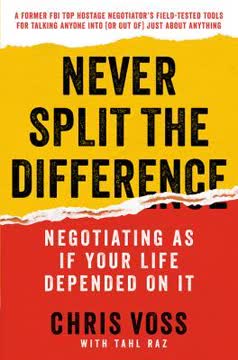
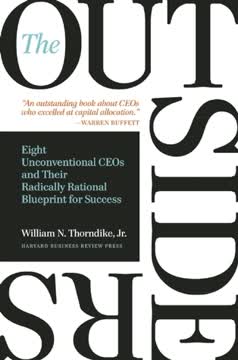
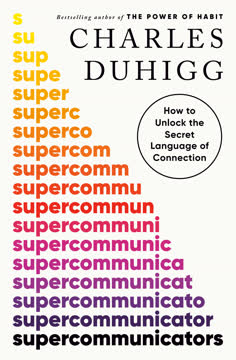
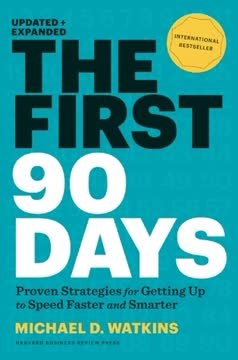




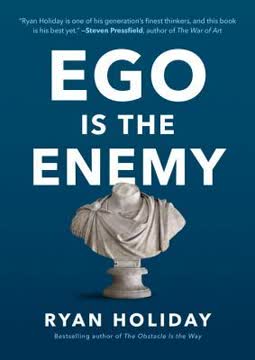
Download PDF
Download EPUB
.epub digital book format is ideal for reading ebooks on phones, tablets, and e-readers.









